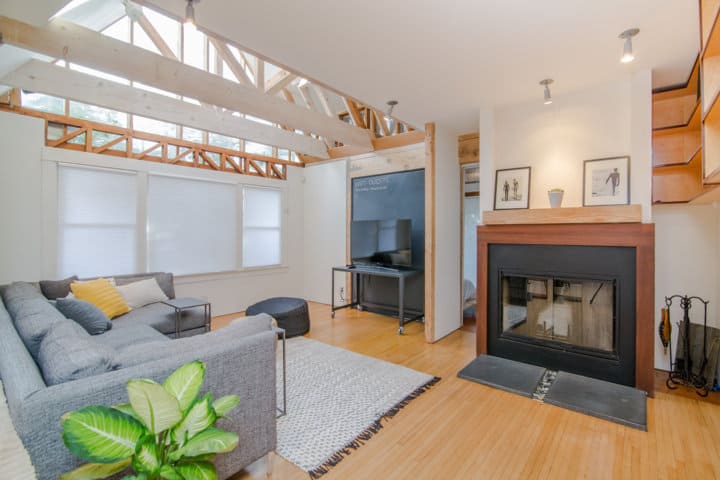What can make you stand out in the competitive architecture and design industry? A well-crafted 3D visualization portfolio. An architecture visualization portfolio helps showcase your skills and opens doors to professional opportunities and creative endeavors.
The impact of a carefully curated 3D architectural visualization portfolio extends far beyond aesthetics, as it also influences potential clients and employers. In this article, you will learn the dos and don’ts of presenting your architectural projects in your portfolio and insights to help you stand out in a crowded industry.
Building an Effective 3D Visualization Portfolio – The Dos
Selecting Key Projects
When assembling your 3D architectural visualization portfolio, the key is variety. Showcase several projects, highlighting your technical prowess and versatility in tackling different architectural challenges. In addition, include residential, commercial, and public spaces to demonstrate the breadth of your skills.
Quality of Visuals
The visual appeal of your 3D architectural visualization portfolio is essential. High-resolution and well-rendered images can make or break the viewer’s first impression. Choose images that encapsulate the essence of each project, presenting them from multiple perspectives to offer a comprehensive view. Remember, the devil is in the details, and your visuals should capture every nuance of your design.
Contextualization
Transport your audience into the real-world context of your projects by incorporating contextual images. These visuals not only showcase the aesthetics of your designs but also emphasize their integration into the surrounding environment. This provides a holistic understanding of your architectural vision in your 3D architectural visualization portfolio.
Clear Project Descriptions
A picture may be worth a thousand words, but the right words can enhance the impact of your visuals. Thus, craft concise and informative project descriptions that communicate the design concept, challenges faced, and innovative solutions employed. Take your audience on a journey through your thought process.
Demonstrating Process
Don’t shy away from revealing the journey behind the final design. Including sketches, concept development, and progress images in your 3D architectural visualization portfolio adds depth and authenticity. Displaying the evolution of your ideas demonstrates your design process and invites the viewer into your creative world.
User Experience Considerations
Your 3D architectural visualization portfolio should be as well-designed as your projects. Create a user-friendly layout that is visually appealing and easy to navigate. Potential clients and employers should be able to explore your work seamlessly, appreciating your designs without distraction.
Common Mistakes to Avoid in a 3D Visualization Portfolio – The Don’ts
Overloading the Portfolio
Quality trumps quantity. Always remember this! Resist the temptation to include every project you have ever worked on in your 3D architectural visualization portfolio. Instead, curate a selection that showcases the best of your abilities. A concise portfolio speaks volumes about your ability to discern and present your most impactful work.
Neglecting Project Details
Your 3D architectural visualization portfolio is a narrative. Hence, neglecting project details is akin to telling only half the story. Ensure all relevant information is included, from the design brief to the challenges faced and overcome. A comprehensive overview helps your audience connect with the depth of your work.
Inconsistent Presentation
Consistency is essential to maintaining a professional and polished presentation. Stick to a unified style and format throughout your 3D architectural visualization portfolio. Sudden shifts in visual language or presentation can be distracting and dilute the overall impact of your work.
Ignoring Feedback
Constructive criticism is a valuable tool for growth. Appreciate feedback from peers and mentors, using it to refine and improve your portfolio continuously. The willingness to learn and evolve is a trait that resonates well in the dynamic field of architecture.
Lack of Personal Branding
In a sea of portfolios, personal branding is your beacon. Infuse your portfolio with a unique design identity that reflects your individuality. Avoid generic presentations, and let your portfolio be a canvas for your distinct style and creative personality.
Conclusion
As architects and designers, your 3D visualization portfolio is more than a collection of images. It proves your creativity, skill, and unique approach to design challenges. It has even become easier today to transform your 3D architectural visualization portfolio from a mere presentation tool into a dynamic instrument for professional growth by adhering to the dos and steering clear of the don’ts.
It is recommended to continuously refine and update your portfolio, treating it as a living entity that evolves with your skills and experiences. In doing so, you can showcase your work and demonstrate your commitment to excellence in the ever-evolving world of architecture.
Discover more from Futurist Architecture
Subscribe to get the latest posts sent to your email.




